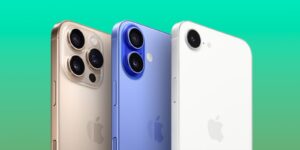The last (?) Intel-based 27-inch iMac is the world’s best desktop — Apple World Today

[ad_1]

(Apple Silicon is, per Apple, “world-class custom silicon to deliver industry-leading performance and powerful new technologies.” It involves customized ARM technology, as well as Apple’s own System on a Chip.)
If the 2020 iteration of the 27-inch iMac is the last one with “Intel Inside,” it’s a fantastic swan song. It’s hands-down the world’s best desktop. Its performance — up to 65% faster than its predecessor for some tasks— is powerful enough for all but the most demanding “power users.”
I have a build-to-order model that comes with a 3.8GHz quad-core Intel Core i7 processor, Radeon Pro 5500XT graphics card with 8GB of view memory, graphics and a 1TB solid state drive. However, I quadruped the standard amount of RAM (more on that in a moment). Performance is quiet and smooth with no lag even when I have seven apps running in the background as I edit a video in iMovie.
Of course, as always, one of the main attractions is the eye-popping screen. The iMac still comes with a 5,120-by-2,880-pixel display (and, yes, it still has the “chin” that will eventually disappear in a redesign).
If you thought the display was excellent before, this one is even better. For example, the iMac finally gets True Tone tech, which automatically changes the white point and color balance of the display based on real-time measurements of the ambient light falling on the screen. I like True Tone, but, if you don’t, you can disable it in the System Preferences app.
What’s more, the new iMac offers a nano-texture glass option — first introduced on Pro Display XDR — for even better viewing under different lighting conditions, such as a bright room or indirect sunlight. Unlike matte finishes that have a coating added to the surface to scatter light, this option is produced through a process that etches the glass itself at the nanometer level. Apple says the result is “extremely low reflectivity and less glare while maintaining stellar image quality and contrast.”
However, the nano-texture glass option is an extra $500, which was too rich for my blood. And since I use my iMac in my home office and take lots of breaks, I didn’t find it a must-have addition (though it would have been nice).
Nano-texture or not, text appears super sharp, videos are lifelike, and you can see incredible levels of detail in photos. For example, video editors can view a 4K (Ultra HD) video (3,840 by 2,160) at 100% while still having a boatload of pixels left over surrounding the video for media libraries, toolbars, and video timelines.
[ad_2]
Source link



